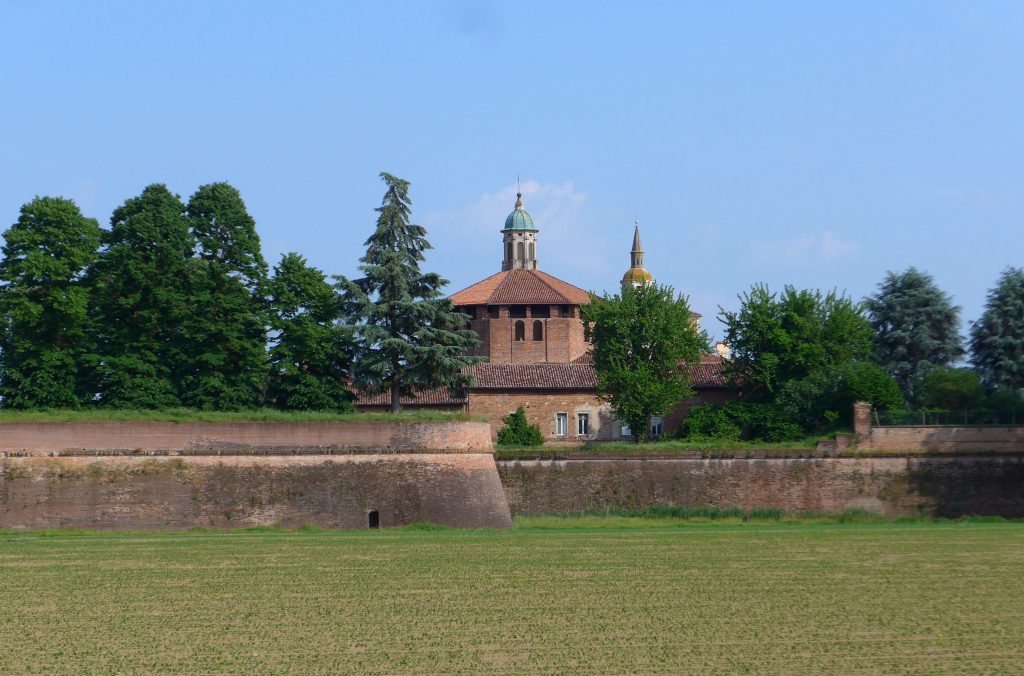It is among the most beautiful places in the whole Lombardia, Sabbioneta. It is beautiful because it is unique, and because it holds a dream. Its name derives from the sand, the alluvial deposits that the Po and Oglio leave behind. Here, in this place at the time reclaimed, Vespasiano Gonzaga Colonna he wanted to build his "ideal city". A city that, belonging to the most beautiful villages in Italy, is now protected by UNESCO. And that, the dream that gave her life, still tells it. In its urban, artistic and architectural exceptionality, in its Renaissance aspect, and in the perfection of its buildings.
The history of Sabbioneta
Actually, the history of Sabbioneta begins well before the Gonzagas. It was a primitive Roman settlement, and a oppidum Byzantine. A castrum Carolingian, and the medieval court of the bishop of Parma. It was contested by the Cremonese, owned by the Bonacolsi. Until, in 1428, it came to the Gonzagas (marquises of Mantua). A Gonzaga, Vespasiano, who inherited it in 1544 and who made it his "ideal city", changed its destiny. A Renaissance-style concept, here transformed into an architectural experiment. A city on a human scale, born in a place of swamps and became a treasure chest of true beauty.

The shapes, proportions and measures of Sabbionera have one alchemical beauty: it seems that the whole city is built on numbers 6 and 12. The hexagonal walls would reveal this, but also the cosmological significance of the sun at its zenith when it enters the Doge's Palace on December 6 (the day on which Vespaniano was born). But there are also those who like to call it "little Rome", because Gonzaga took Roman cities as a model. Moreover, Sabbioneta was not his first project. As Viceroy of Navarre he had already planned the Spanish Pamplona, but chose his homeland to create an ambitious ideal city-state.
Monuments and typical products of an "ideal" village
Crossing Porta Vittoria, you immediately enter that dream called Sabbioneta. Turn into via dei Serviti, arrive at the Incoronata church with the mausoleum of Vespasiano and continue up to Ducal square. Here you can admire the Palazzetto del Cavalleggero and the church of the Assunta with its rocaille decorations, the Palazzo della Ragione and the Ducal Palace (from which Vespasiano began to trace his city). Impossible not to visit it, with its statues and decorated ceilings. Among the other buildings, the church of San Rocco and the synagogue with stuccoes by Pietro Bolla, the ancient theater (first permanent theater in Europe) and the suburban villa of Vespasiano, Garden palace. Here the Gallery of the Ancients - created to house the Duke's collection of ancient marbles, visible today at the Palazzo Ducale in Mantua - with its 96 meters it is the second longest gallery in Italy after that of Uffizi.

After a visit to Sabbioneta, the ideal conclusion is to sit at the table of a typical restaurant to taste the Mantuan tradition. There are three dishes that just can't miss: i sorbir d'agnoli (agnolini in meat broth), i pumpkin tortelli and stewed donkey, to be watered with a glass of Lambrusco di Sabbioneta IGT. While, to take some sweetness home with you, the perfect souvenir is the filos, biscuits with lard and mint, and the sbrisolona cake with hazelnuts instead of almonds and durum wheat flour.
Source of the photo: View of the Doge's Palace - credit Laurom - CC BY-SA 4.0





